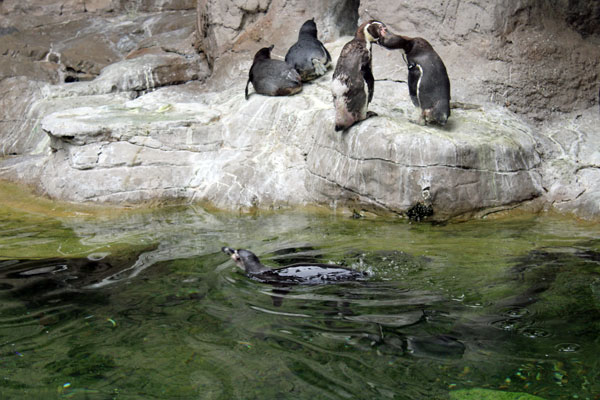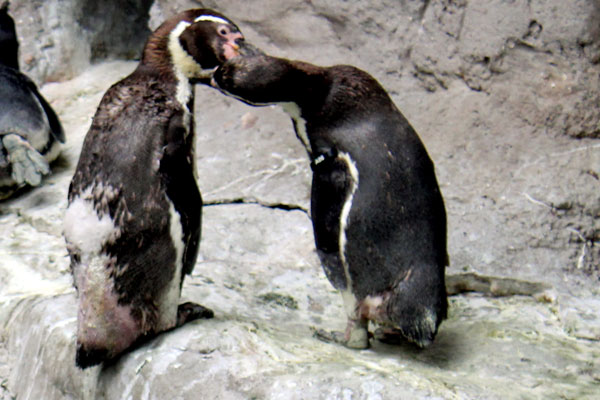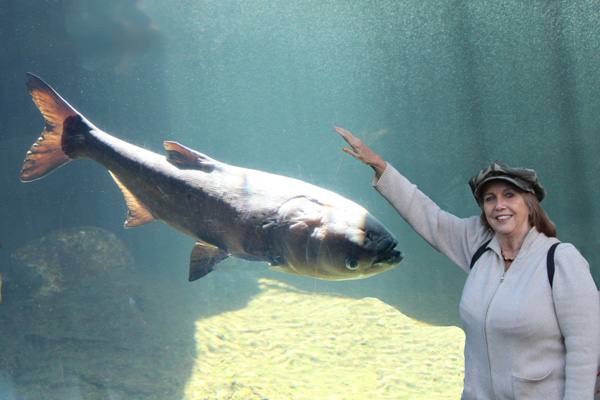The
two RV Gypsies enjoyed
The Penguins, Puffins and big fish
at The St. Louis Zoo

|
Penguins are
a group of aquatic flightless birds. There are several different types
of penguins. They live almost exclusively in the Southern Hemisphere:
only one species, the Galápagos penguin, is found north of the Equator.
Highly adapted for life in the water, penguins have counter shaded dark
and white plumage and flippers for swimming. Most penguins feed on krill,
fish, squid and other forms of sea life which they catch with their
bills and swallow it whole while swimming. A penguin has a spiny tongue
and powerful jaws to grip slippery prey. They spend roughly half of
their lives on land and the other half in the sea.
The largest living species is the Emperor penguin with adults on average
being 3 feet 7 inches tall and weigh 77pounds. The smallest penguin
species is the little blue penguin (the fairy penguin), which stands
around 13 inches) tall and weighs 2.2 pounds Today, larger penguins
generally inhabit colder regions, and smaller penguins inhabit regions
with temperate or tropical climates. |
 |
 |
Below:
Sleepy Joe and his helper.
 |
 |
 |
Kissing Cousins |
 |
 |
 |
 |
 |
 |
 |
 |
 |
 |
 |
 |
 |
Puffins are seabirds that
feed primarily by diving in the water. They breed in large colonies
on coastal cliffs or offshore islands, nesting in crevices among rocks
or in burrows in the soil. Two species, the tufted puffin and horned
puffin, are found in the North Pacific Ocean, while the Atlantic puffin
is found in the North Atlantic Ocean.
All puffin species have predominantly black or black and white plumage,
a stocky build, and large beaks that get brightly colored during the
breeding season. They shed the colorful outer parts of their bills after
the breeding season, leaving a smaller and duller beak. Their short
wings are adapted for swimming with a flying technique underwater. In
the air, they beat their wings rapidly (up to 400 times per minute]
in swift flight, often flying low over the ocean's surface. |
 |
 |
 |
 |
 |
 |
| |
 |
 |
 |
 |
 |





























